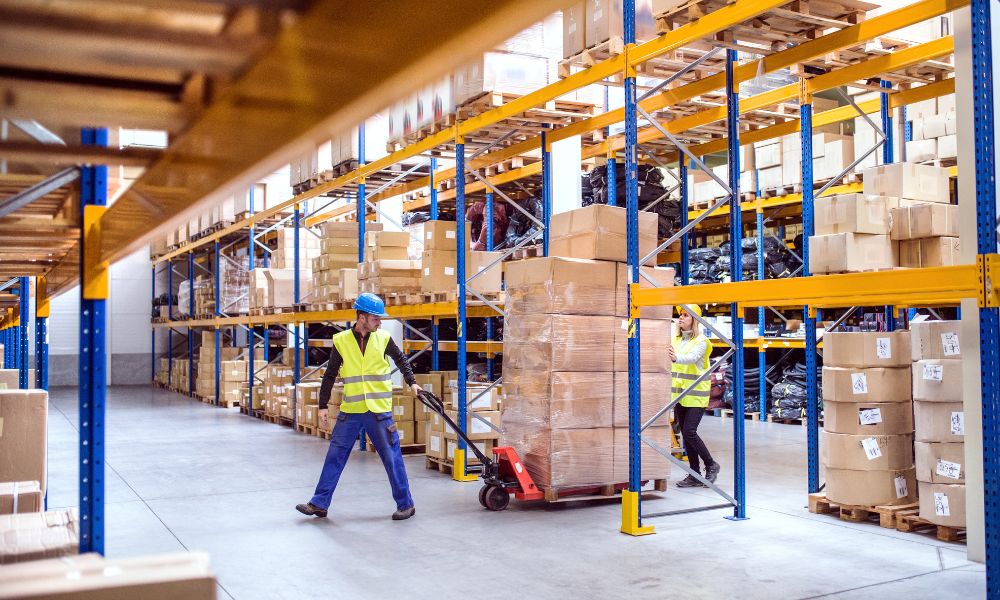
In an era where efficiency and innovation are at the forefront of industrial success, the advent of autonomous forklifts in warehouse operations emerges as a transformative force.
These self-guiding vehicles, powered by sophisticated algorithms and sensor technology, are not merely enhancements to the logistics sector; they represent a fundamental shift toward automation.
As businesses strive to meet the increasing demands of speed, accuracy, and cost-effectiveness, autonomous forklifts stand out as pivotal tools, reshaping the foundational aspects of warehouse dynamics and setting new industry standards for operational efficiency, safety, and productivity.
The integration of these machines into daily operations illustrates a commitment to embracing the future of automated logistics, offering a window into the potential of smart technology to revolutionize material handling processes.
Enhanced Efficiency and Productivity
The deployment of autonomous forklifts in warehouse environments heralds a new era of operational efficiency. These machines are engineered to perform repetitive, labor-intensive tasks with unparalleled precision and consistency.
Unlike human operators, autonomous forklifts are not subject to fatigue, enabling them to operate continuously without the need for rest breaks or shift rotations. This capability significantly reduces downtime and ensures a constant flow of goods through the supply chain.
Additionally, their ability to work tirelessly around the clock allows businesses to meet tight deadlines and handle high volumes of goods, thereby significantly enhancing overall productivity levels and meeting customer demands with greater speed and reliability.
Reduced Operational Costs
The financial implications of integrating autonomous forklifts into warehouse operations are profound.
By automating the routine tasks of moving, lifting, and stacking goods, companies can realize substantial savings in labor costs. These savings are not limited to wages alone but extend to training, insurance, and other employment-related expenses.
Furthermore, autonomous forklifts are designed to operate with optimal efficiency, minimizing unnecessary movements and conserving energy. This efficiency translates into lower energy costs and reduced wear and tear on equipment, contributing to a decrease in maintenance expenses.
The cumulative effect of these cost reductions can significantly impact a company’s bottom line, freeing up resources that can be invested in innovation, expansion, or improving service quality.
Minimized Human Error and Increased Safety
One of the most compelling advantages of autonomous forklifts is their contribution to workplace safety.
Human error, a leading cause of accidents in warehouse settings, is significantly mitigated when operations are entrusted to machines equipped with advanced navigation and obstacle detection technologies.
Autonomous forklifts are built with sophisticated sensors that provide them with a 360-degree awareness of their surroundings, enabling them to identify and avoid potential hazards with remarkable accuracy.
This proactive approach to safety helps in preventing accidents, protecting employees, and ensuring the integrity of the goods being handled.
Furthermore, professional Adaptalift NZ Forklifts – Forklift Hire Auckland, emphasizes the importance of leveraging such technology to elevate safety standards, demonstrating a commitment to not only operational efficiency but also to the well-being of the workforce.

Scalability and Flexibility
In today’s dynamic market conditions, the ability of a warehouse to scale operations efficiently is crucial.
Autonomous forklifts offer an adaptable solution that can grow with the business, providing the flexibility needed to adjust to fluctuating demands. Unlike traditional forklifts, which require extensive training for operators to adapt to new tasks or environments, autonomous forklifts can be quickly reprogrammed to meet changing operational needs.
This agility allows warehouses to respond swiftly to seasonal peaks, unexpected order volumes, or shifts in inventory strategy, ensuring that businesses can maintain high levels of service without the lead times associated with training or hiring additional staff.
Data-Driven Decision Making
The strategic value of autonomous forklifts extends beyond their physical tasks, contributing rich data for analytics and decision-making.
As these machines carry out their duties, they collect detailed information on various aspects of warehouse operations, from task completion times to route efficiency.
This data can be analyzed to uncover insights into operational bottlenecks, inefficiencies, or opportunities for further optimization. Managers can leverage this information to make informed decisions that enhance workflow, reduce costs, and improve overall operational effectiveness.
In this way, autonomous forklifts serve as both workforce and information resource, driving continuous improvement through data-driven strategies.
Enhanced Inventory Management
The precision with which autonomous forklifts operate has a direct impact on inventory management. Their integration with warehouse management systems allows for real-time tracking of goods as they move through the supply chain, ensuring accurate placement and retrieval.
This level of accuracy is critical in maintaining up-to-date inventory records, reducing the likelihood of errors that can lead to stock shortages or surpluses.
By improving the reliability of inventory data, businesses can better forecast demand, optimize stock levels, and reduce holding costs, all of which contribute to more efficient operations and improved customer satisfaction.
Future-Proofing Warehouse Operations
Investing in autonomous forklift technology is not merely an operational decision; it’s a strategic move towards future-proofing warehouse operations.
As the logistics and supply chain industry continues to evolve, driven by advancements in technology and changing market demands, embracing automation positions warehouses to stay ahead of the curve.
This adoption of autonomous forklifts signals a commitment to innovation, ensuring that businesses remain competitive in a rapidly changing landscape.
It prepares them to seamlessly integrate with future technologies and trends, safeguarding their operational viability and ensuring their long-term success in the marketplace.
Conclusion
The introduction of autonomous forklifts into warehouse operations represents a significant milestone in the journey towards fully automated logistics. Their impact on streamlining processes, enhancing safety, reducing costs, and improving decision-making is undeniable.
As businesses look to the future, the adoption of these smart machines will be a key determinant of their ability to compete and thrive in the global market.
The journey towards automation is not without its challenges, but the potential rewards in terms of efficiency, safety, and profitability are immense.
As the logistics sector continues to embrace these innovations, the vision of an automated, data-driven supply chain becomes increasingly attainable, promising a new era of operational excellence and strategic advantage.
